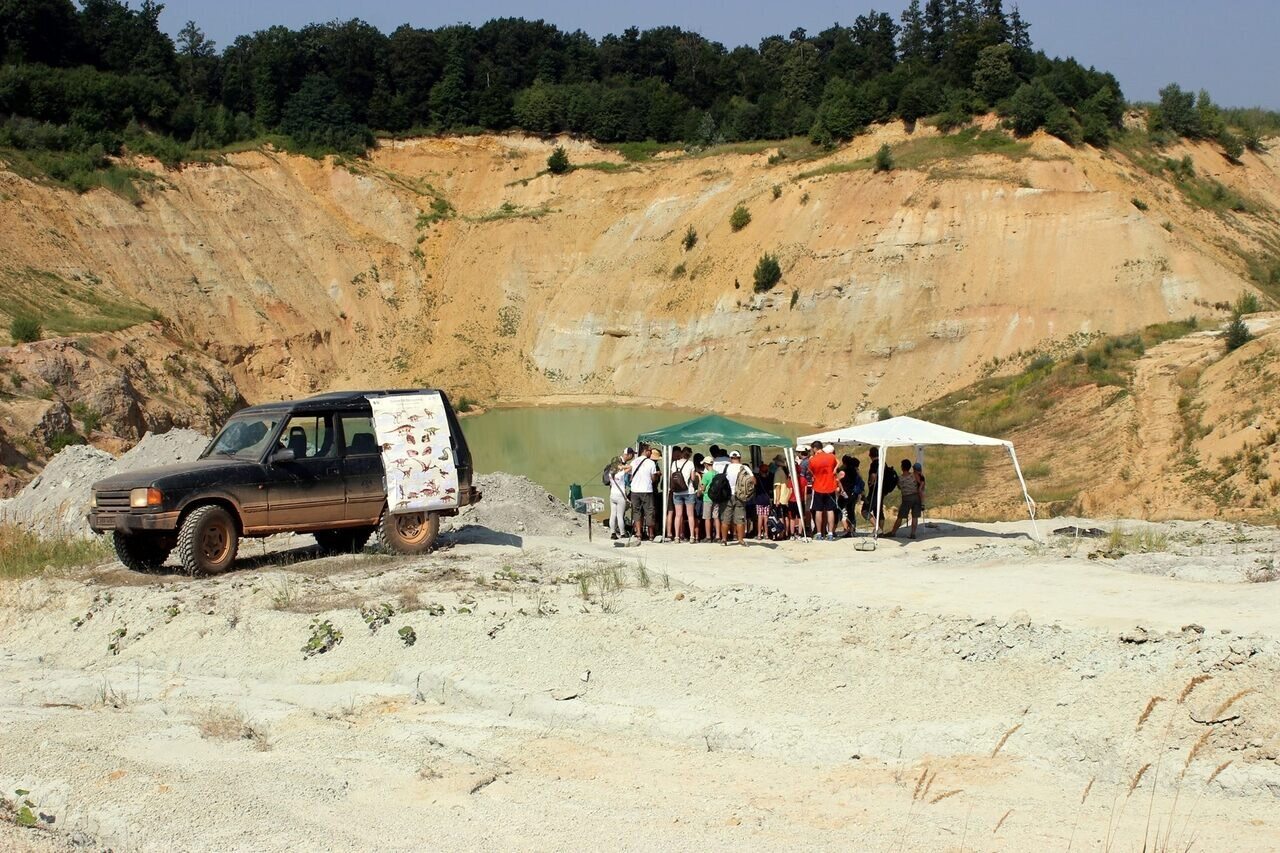Dinosaur graveyard found under destroyed Hungarian village

A former Hungarian settlement, Iharkút, was destroyed in the interests of mining. This might sound tragic, but thanks to the extraction, a new era in Hungarian paleontology has opened up. Palaeontologist Attila Ősi discovered the site and he and his team have been exploring the unique Iharkút dinosaur site for 23 years.
Dinosaur graveyard in Hungary
Dr Attila Ősi, professor of palaeontology, arrived at the site in April 2000. Within minutes, he was holding the first dinosaur bone from the age of dinosaurs to be found in Trianon Hungary, 24.hu reports. Dr Ősi was then a geology student, now, he is the head of the Department of Palaeontology at ELTE (Eötvös Loránd University) and the Hungarian Dinosaur Expedition, and has been researching the site with his team for 23 years.
Meanwhile, Iharkút, and with it Hungary, is not only on the world map of dinosaur sites, but there is also a continuing scientific interest in the uniqueness and richness of the Cretaceous finds here, 24.hu writes. The paleontologist wrote the history of the site in his book titled Dinoszauruszok nyomában: Kaland, felfedezés és a bakonyi őshüllőkutatás története (In the Footsteps of Dinosaurs: Adventure, Discovery and the History of Bakony Paleontology) published in mid-July. Fans of Hungarian dinosaurs, ancient crocodiles and flying reptiles can visit the fieldwork at Iharkút again this year.
Where was/is Iharkút?
About halfway between Veszprém and Pápa, in the Bakony Hills, lay the village of Iharkút, where bauxite mining began in the 1970s. In the early 1980s, Iharkút was practically liquidated for the sake of extraction. The inhabitants were moved to neighbouring settlements, the buildings were demolished and the village disappeared.
Attila Ősi, as a student at ELTE at the turn of the millennium, wondered why there were no vertebrate finds from the geohistorical Middle Ages in Hungary. Shortly afterwards, he encountered the dinosaur graveyard in Iharkút.
“There were the bones on top of each other. Vertebrae, teeth, fragments of all kinds, the like of which no one had ever seen in Hungary before,”
Dr Ősi told 24.hu.
More than 40 species of vertebrate remains have been found, including eight dinosaurs ranging from turkey-sized raptors to 3-4 metre long carnivores and a 4-4.5 metre long, 650 kilogram herbivorous Hungarosaurus. You can see descriptions and diagrams of the different dinosaurs HERE. Fieldwork lasts 2-3 weeks a year with a team of 20-24 researchers. For the rest of the year, paleontologists work in the laboratory to study the finds, 24.hu explains.
The first Hungarian dinosaur egg:
Extremities were found in the Bakony hills
The Iharkút finds have attracted scientists from all over the world. Researchers from all over Europe, America and Argentina come here, and several international collaborations are constantly taking place. The international value of Iharkút lies in the fact that, as Dr Ősi puts it, “extremities” are found here: unique representatives of already known taxonomic families, forms never seen before, such as the Mochlodon vorosi or the herbivorous crocodile Iharkutosuchus makadii.
Below, you can find some pictures of the site, and a video at the end. Find more videos HERE.
In the picture, the yellow bedrock reveals the red remains of bones that are more than 200 million years old:

